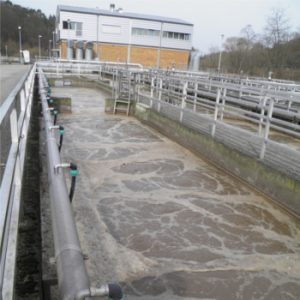In this post, Moritz Link reports about his recently published paper “Comparison of dilution factors for German wastewater treatment plant effluents in receiving streams to the fixed dilution factor from chemical risk assessment”.
The removal of many pharmaceuticals and personal care products during wastewater treatment is incomplete and residues are discharged into receiving waters via the effluents. Due to the high bioactivity of these substances, already small concentrations can have adverse effects on aquatic species. Several risk assessments use a standard dilution factor of 10 for effluents entering receiving waters during the environmental exposure assessment, in order to account for the incomplete removal. However, the real dilution potential of German receiving waters under low flow conditions is largely unknown and an overestimated standard dilution factor could lead to environmental concentrations above predicted levels.
Our study shows, that especially under low flow conditions, the dilution potential of around 60% of German receiving waters is below 10, with a median dilution factor of 5. Even under mean flow conditions, 8% of the calculated dilution factors fell below 10. Furthermore, the risk assessments consider only effluent discharges of a single wastewater treatment plant into a receiving water, whereas in reality multiple wastewater treatment plants discharge into the same water body. Calculated dilution factors considering effluent discharges along a receiving water body were even lower and showed that the decrease in dilution potential was mainly driven by the effluents of the next wastewater treatment plant upstream.
In our study we thus conclude that using the standard dilution factor of 10 during exposure assessment would result in the underestimation of environmental concentrations for authorised chemicals, especially during low flow conditions. Consequently, measured environmental concentrations might exceed predicted environmental concentrations and ecological risks posed by effluents could be much higher. A revision of current risk assessment practices may be required if the aim is to safeguard the ecological integrity of receiving waters.
The paper was authored by Moritz Link, Peter C. von der Ohe, Katharina Voß, and Ralf B. Schäfer and published in Science of the Total Environment.

